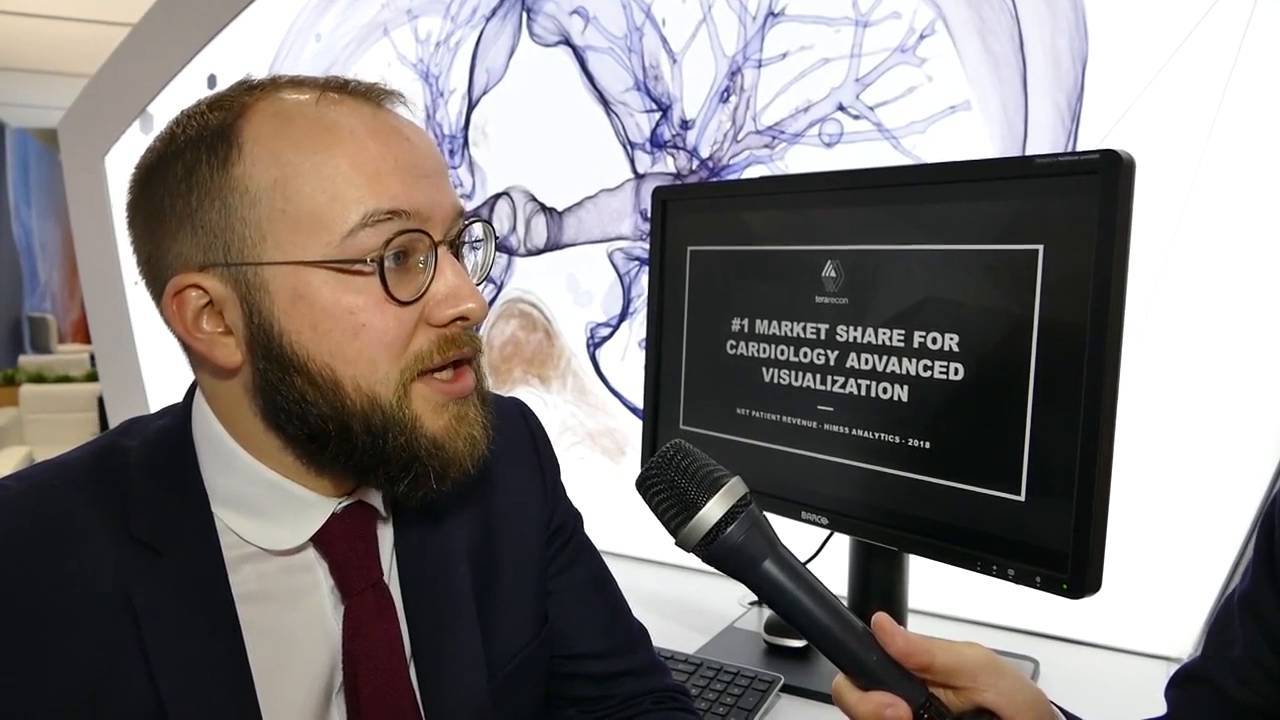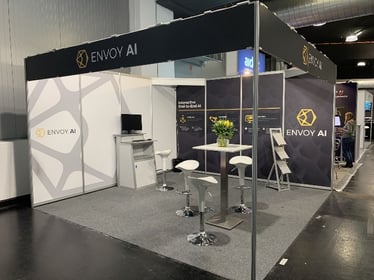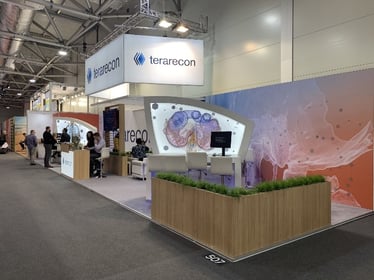
At ECR 2019 this year, we had great conversations with attendees, customers, partners, exhibitors, and even had the opportunity to participate in an interview to discuss the future of AI with our friends at Médecine TV. Check out the three interview videos below and read the interview all about the latest AI trends in radiology.


Interviews below were conducted by EME (Médecine) TV.

Q: TeraRecon has been using AI for a long time. Are you moving towards deep learning?
A: TeraRecon has always been working on AI but we are also moving into deep learning because it helps us develop algorithms faster, better and with more accuracy. We are able to frame a question that AI deep learning can answer versus having to perform an if/else statement to answer a clinical question. Now, we can leverage the data we are storing in a structured way so that we can learn from a clinical question.
Q: What is the main difference between AI and deep learning?
A: AI is an overall technique learned by creating if/else statements. With deep learning, you are asking the algorithm a question. “Is there is a tumor? What type of tumor?" You have to actually ask these questions and then the algorithm will try to learn from the data and labels you provided.
Q: What is the challenge of deep learning? Can it be a huge success or a huge failure?
A: TereRecon views AI as a technique and to us, AI will be considered a success when everyone is using it every day. There is a lot of expectations around AI today and it’s not the be all and end all. People think that AI will change the world and that could be true, but it could be wrong! AI answers some questions but not all of them.

Q: There are a lot of questions around the Cloud. Why should you move to the Cloud?
A: The Cloud offers many benefits! It is very cost effective, offers infinite scalability, and it allows collaboration between different physicians and hospitals.
Q: Why do you think the Cloud is cost-effective?
A: The Cloud is very cost-effective. From a hospital’s perspective, they don’t need to maintain multiple servers or additional IT personnel. From TeraRecon's side, we essentially can do a single software upgrade and disseminate it to all of our customers.
Q: One of the many issues around the Cloud is security. Is the Cloud secure?
A: The Cloud is very secure today as all of our offerings are GDPR compliant. Our workflow is designed for security. Before we transmit data from a hospital, we actually de-identify the data, thus removing any patient information before it reaches the cloud in order to make sure that it stays secure.
Q: How should Radiologists choose a Cloud platform?
A: There are so many cloud offerings to choose from and it truly depends on the type of budget you are working with. TeraRecon will help by making recommendations for a physician or hospital on a case by case basis.

Q: What’s new with TeraRecon at ECR 2019?
A: We're having a very exciting show here! 2019 is going to be about working with the established relationships we've made in 2018 regarding very cutting-edge AI workflows, working with those influencers, and working with those innovator sites to really make a difference. We are actually installing our EnvoyAI platform, creating workflows in this AI results explorer called Northstar and looking at each workflow to add first-value to our customers.
What you will see from TeraRecon are actual working examples of AI making a difference in healthcare. I want to point out that we're doing all this in partnership with AI developers and PACS companies, which create a collaborative initiative where our technology can unleash potential in a really affordable way.
Q: Do you have feedback from your customers and end users?
A: We do have feedback from the end user! These are sophisticated customers. These are physicians, and collections of multi-specialty groups who have come together to say, "Look, we know we have to participate in Artificial Intelligence. We know that there's a tie between how we plan radiotherapy or how we treat women in their care paths, and how we are doing endograft planning and vascular surgery, and how we're planning cardiac MR.” You can imagine all the different potential when you’re measuring and looking at images but it's just too hard and too time-consuming.
We don't have a problem finding problem statements in healthcare to solve and actually, the technology is so good it's not difficult to apply the technology to create these measurements. It's about focusing and deciding what problems to solve first. So, indeed, the customers are very clear about what they need. The actual measurements or color overlays or clinical indications that we need to make are also clear. The problem we solve is the interoperability and making the systems that exist see this new information.
Q: It seems that your company is all about collaboration between the developer, the end user, and the interoperability between all the existing systems. Do you agree?
A: That's right, we are really the middleware. There was a missing link where the systems that you view within couldn't handle ornate kinds of interactions, and AI developers didn't have experience inside of healthcare systems at scale. They couldn’t really make it work or didn't know how, and it would take way too many resources to learn.
We’ve made it easy, we've made it possible, and we've created this middleware, this interoperability layer. Whether that is viewing or working on a mobile device, working in your PACS, or working in your electronic health record. We built the technology layer that was missing and we're making it available to everyone.
ECR 2019 was a great opportunity to speak with attendees about their projects and spread the word about our exciting advanced visualization and AI solutions. We look forward to next year!
Download the "A Practical Approach to Implementing AI" eBook
These Stories on Artificial Intelligence
TeraRecon Headquarters
4309 Emperor Blvd, Suite 310
Durham, NC 27703
Tel: 650.372.1100
Fax: 650.372.1101
info@terarecon.com
All offerings are subject to availability and regulatory clearance, which may vary by country. Please verify product status with your local TeraRecon representative.
No Comments Yet
Let us know what you think